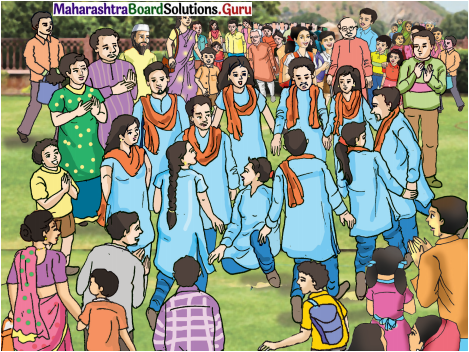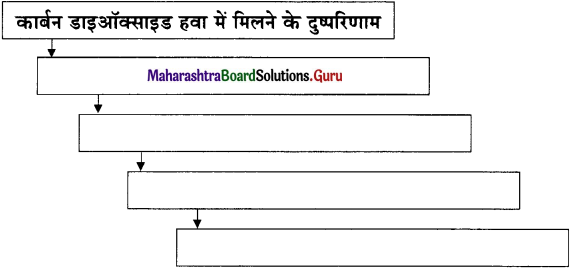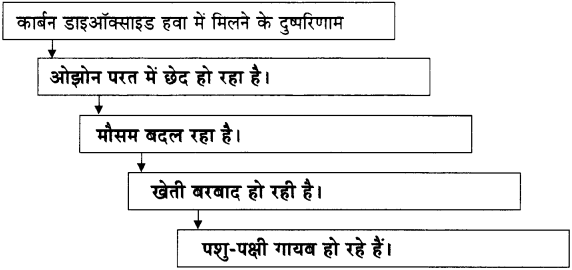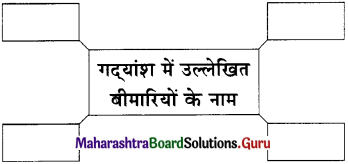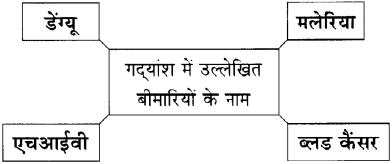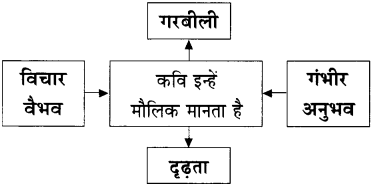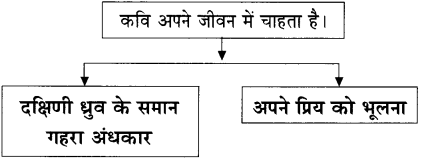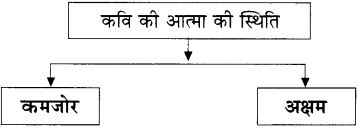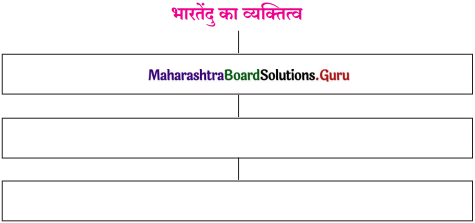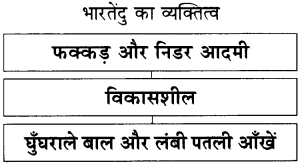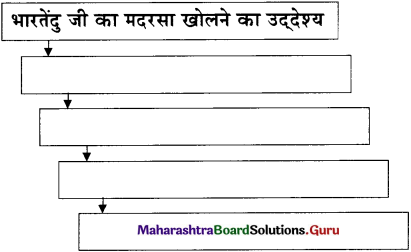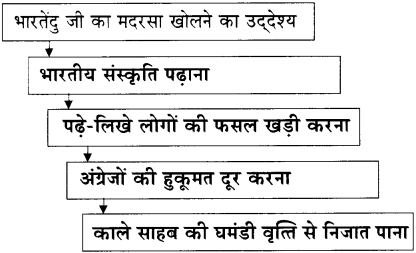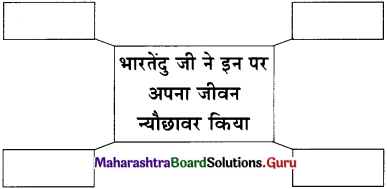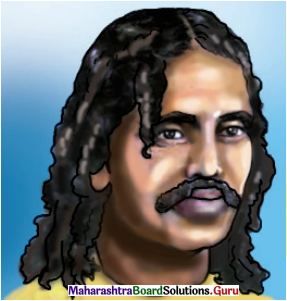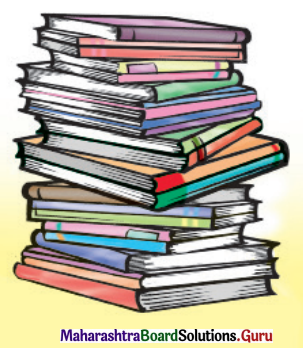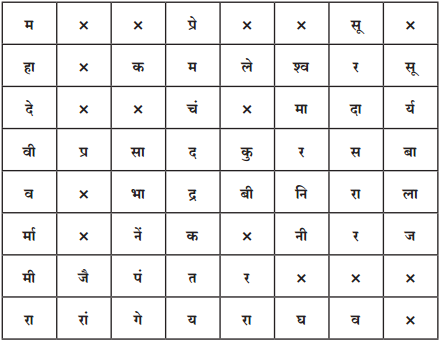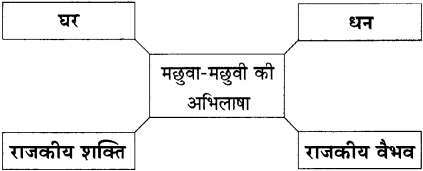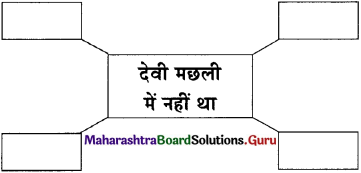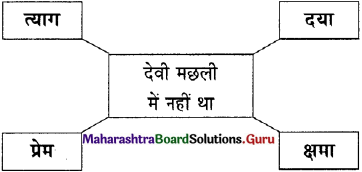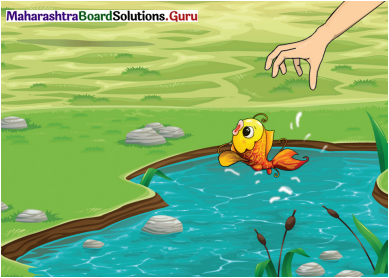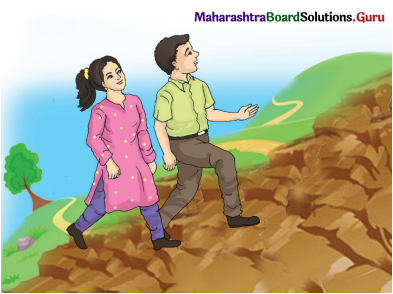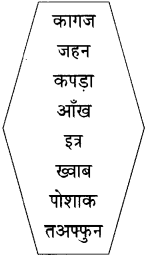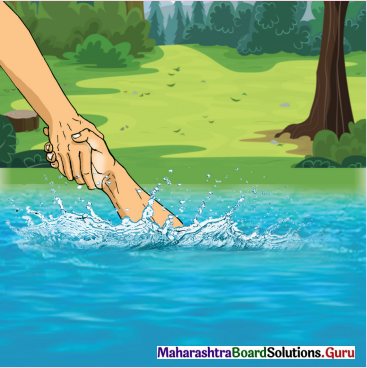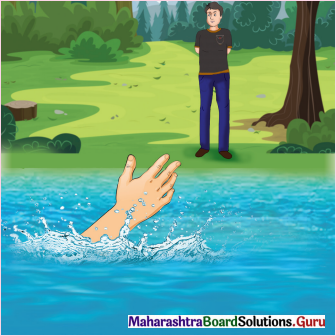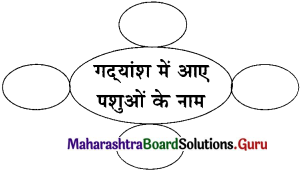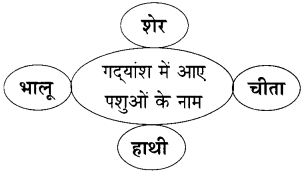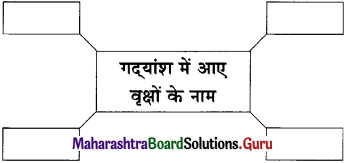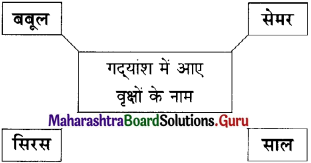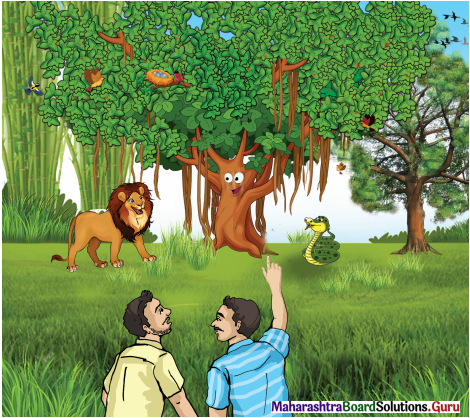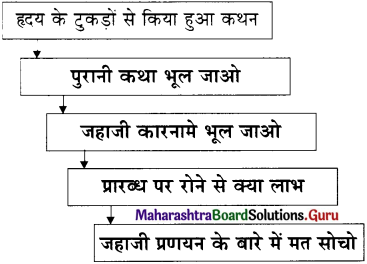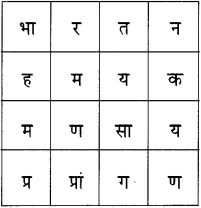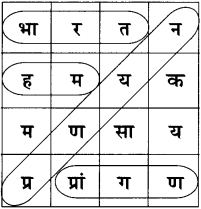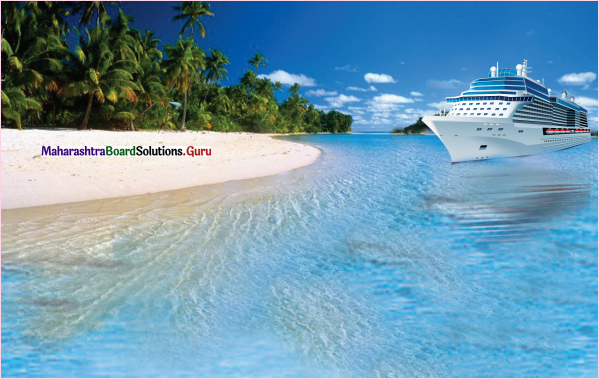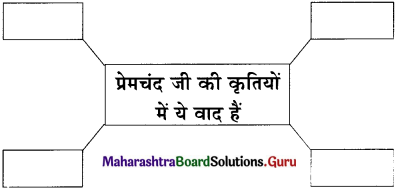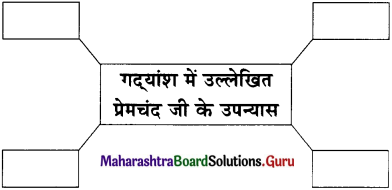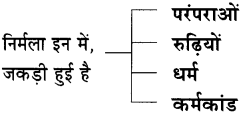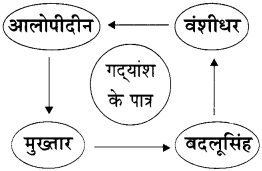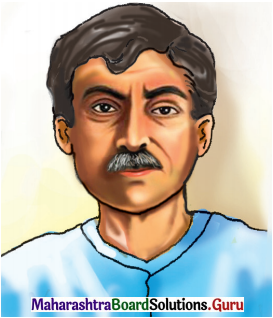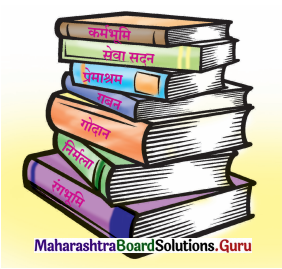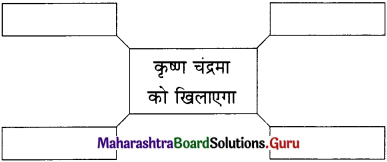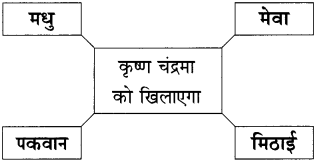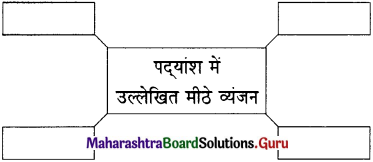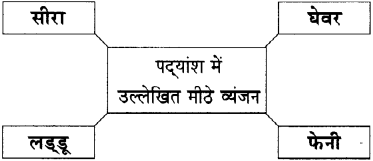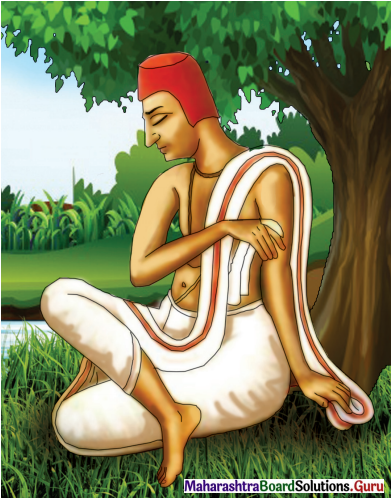Std 11 Hindi Chapter 14 Hindi Mein Ujjwal Bhavishya Ki Sambhavnaye Question Answer Maharashtra Board
Balbharti Maharashtra State Board Hindi Yuvakbharati 11th Digest Chapter 14 हिंदी में उज्ज्वल भविष्य की संभावनाएँ Notes, Textbook Exercise Important Questions and Answers.
Hindi Yuvakbharati 11th Digest Chapter 14 हिंदी में उज्ज्वल भविष्य की संभावनाएँ Questions And Answers
11th Hindi Digest Chapter 14 हिंदी में उज्ज्वल भविष्य की संभावनाएँ Textbook Questions and Answers
पाठ पर आधारित
प्रश्न 1.
मनोरंजन के क्षेत्र में हिंदी भाषा के माध्यम से रोजगार की संभावनाएँ लिखिए।
उत्तर :
आधुनिक जमाने में मनोरंजन एक उद्योग के रूप में उभरकर आया है। टी. वी. ने असंख्य कलाकारों, संगीतकारों, गायकों के लिए रोजगार का महाद्वार खोला है। इसके अलावा हिंदी रचनाकारों, संवाद-लेखकों, पटकथा-लेखकों और गीतकारों के लिए भी नए-नए अवसर प्राप्त हो रहे हैं।
कई प्रसिद्ध धारावाहिकों के अनुवाद में भी रोजगार की संभावनाएँ हैं। कार्टून फिल्मों में भी डबिंग (पार्श्व आवाज) के लिए अनेक संभावनाएँ हैं।
फिल्म क्षेत्र में पटकथा लेखन, संवाद-लेखन, गीत लेखन, कलाकारों के लिए हिंदी का सही उच्चारण सिखाने के लिए प्रशिक्षक के रूप में रोजगार की संभावनाएँ हैं।
रेडियो एक पुराना माध्यम है। रेडियो में रूपक, नाटक, धारावाहिक, समाचार-लेखन, भाषण, वाचन इन क्षेत्रों में अवसर प्राप्त हैं। इसके अलावा रेडियो जॉकी का काम भी आज के जमाने की माँग है।
प्रकाशन क्षेत्र में भी पुस्तकों के लिए मुद्रित शोधन, समाचार पत्रों में संपादक, पत्रकार, अनुवादक, स्तंभ लेखक इन जैसे विविध रोजगार को पाने के लिए हिंदी भाषा पर अधिकार होना जरूरी है।
![]()
प्रश्न 2.
‘अंतर्राष्ट्रीय स्तर पर हिंदी रोजगार की भाषा बनती जा रही है’, इसपर अपने विचार लिखिए।
उत्तर :
भूमंडलीकरण (globalization) के इस युग में आज दुनिया बिल्कुल नजदीक आ गई है। भारत जैसी बड़ी आबादी वाले देश में अनेक विदेशी कंपनियाँ व्यापार के लिए इच्छुक हैं। यही कारण है कि दुनिया के 127 देशों के विश्वविद्यालयों में हिंदी पढ़ाई जाती है।
इन देशो में हिंदी अध्यापक का कार्य करना एक सुअवसर है। दुनिया के लगभग सभी देशों में हमारे दूतावास हैं। इसी तरह दुनिया के तमाम देशों के दूतावास हमारे देश में भी हैं। इनमें से कई दूतावासों में अब हिंदी विभाग की स्थापना हो चुकी है। इस विभाग में हिंदी अधिकारी, हिंदी अनुवादक, हिंदी सहायक जैसे पद उपलब्ध होते हैं। इन विभागो द्वारा पत्राचार, समाचार, रिपोर्ट हिंदी में भेजने के लिए हिंदी विशेषज्ञों का विशेष महत्त्व है।
अन्य देशों के पर्यटक हमारे देश में आते हैं। बहुभाषी लोगों के लिए ‘टुरिस्ट गाइड’ का काम यह एक नया रोजगार है। विदेशी कंपनियों की वस्तुएँ भारत में बेचने के लिए भी मैनेजर से लेकर विक्रेता तक अनेक प्रकार के पदों पर रोजगार पाना समय की माँग है।
प्रश्न 3.
निम्नलिखित मुद्दों के आधार पर हिंदी में रोजगार की संभावनाओं का वर्गीकरण करते हुए तालिका बनाइए।
(१) मनोरंजन
(२) विज्ञापन
(३) अनुवाद
(४) अंतर्राष्ट्रीय
उत्तर :
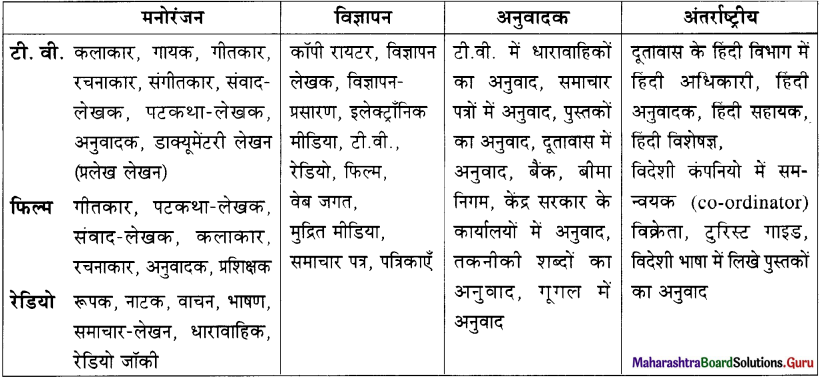
व्यावहारिक प्रयोग
प्रश्न 1.
‘जिंदगी के साथ भी, जिंदगी के बाद भी’ यह विज्ञापन आप रेडियो के लिए नए तरीके से तैयार कीजिए।
उत्तर :
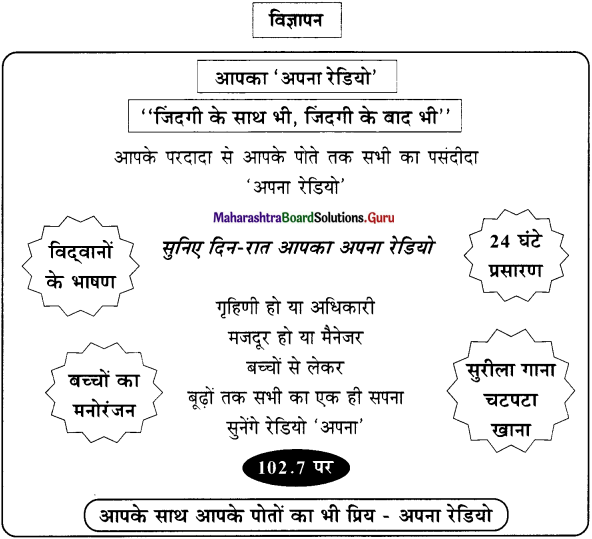
![]()
प्रश्न 2.
‘उच्च माध्यमिक हिंदी शिक्षक पद’ का विज्ञापन पढ़कर उसे ऑनलाईन भरने की आवश्यक प्रक्रिया की जानकारी लिखिए।
उत्तर :
- उम्मीदवार विज्ञप्ति के अनुसार अंतिम तारीख से पहले ऑफिशियल वेबसाइट पर जाकर लिंक ओपन करें।
- लिंक ओपन होने के बाद यूजर आई. डी. पासवर्ड देकर रजिस्ट्रेशन करें।
- इसके बाद आधिकारिक सूचनाओं को ध्यान से पढ़ें।
- फिर ऑनलाइन आवेदन पर क्लिक करें। फिर सभी आवश्यक और महत्त्वपूर्ण विवरण को भरें। (उदा. वैयक्तिक जानकारी, उम्र, शैक्षणिक योग्यता आदि)
- सभी दस्तावेज, फोटो तथा हस्ताक्षर अपलोड करें।
- फिर आवेदन शुल्क का भुगतान करें।
- इसके बाद ऑनलाइन आवेदन फॉर्म सबमिट करें। (सबमिट करने से पहले जानकारी भरने में गलती न हो इसलिए एक बार जाँच लें।)
- इसके बाद आवेदन पत्र का प्रिंट आऊट लें, जो आपको भविष्य में काम आएगा।
हिंदी में उज्ज्वल भविष्य की संभावनाएँ Summary in Hindi
हिंदी में उज्ज्वल भविष्य की संभावनाएँ लेखक परिचय :
डॉ. दामोदर खड़से जी हिंदी जगत् में एक प्रख्यात कवि, कथाकार, उपन्यासकार, अनुवादक आदि अनेक रूपो में माहिर है। आपका जन्म 11 नवंबर 1948 को छत्तीसगढ़ के कोरिया में हुआ। आपने बैंकिग तथा तकनीकी शब्दावली का भी निर्माण किया है।
कंप्यूटर एवं बैंकिग प्रशिक्षण को सुगम बनाने के लिए आपने योगदान दिया है। आप तीस वर्षों तक बैंक में सहायक महाप्रबंधक (general manager) (राजभाषा) के रूप में कार्यरत थे।
एक सशक्त लेखक के साथ-साथ आप एक सफल वक्ता भी हैं। आपको साहित्य अकादमी पुरस्कार के अलावा अनेक राष्ट्रीय स्तर के पुरस्कारों से सम्मानित किया गया है।
![]()
हिंदी में उज्ज्वल भविष्य की संभावनाएँ रचनाएँ :
काला सूरज, भगदड़, बादल राग (उपन्यास) सन्नाटे में रोशनी, नदी कभी नहीं सूखती आदि (कविता संग्रह) भटकते कोलंबस, पार्टनर, गौरेया को तो गुस्सा नहीं आता (कहानी संग्रह), मराठी से हिंदी में अनुवाद – 21 कृतियाँ
हिंदी में उज्ज्वल भविष्य की संभावनाएँ विधा परिचय :
भाषण एक कला है। अपने विचारों से जनमानस को अवगत करने वाला यह एक सशक्त माध्यम है। भाषण द्वारा श्रोताओं को प्रभावित करना, उन्हें प्रेरित करना आदि उसकी विशेषताएँ हैं। हिंदी में उज्ज्वल भविष्य की संभावनाएँ यह पाठ लेखक के एक भाषण का संकलित अंश है।
भारत में स्वामी विवेकानंद, पं. जवाहरलाल नेहरू, सरोजिनी नायडू, सरदार पटेल आदि महापुरुषों के भाषण विश्व में प्रसिद्ध हैं।’
हिंदी में उज्ज्वल भविष्य की संभावनाएँ विषय प्रवेश :
‘हिंदी में उज्ज्वल भविष्य की संभावनाएँ’ यह पाठ लेखक डॉ. दामोदर खड़से जी के भाषण का संकलित अंश है। इस भाषण से हिंदी के माध्यम से अलग-अलग क्षेत्रों में विविध प्रकार के रोजगार को प्राप्त करने की संभावनाएं बताई गई हैं। हिंदी भाषा का महत्त्व बढ़ाना यह इस भाषण का हेतु है।
हिंदी में उज्ज्वल भविष्य की संभावनाएँ सारांश :
लेखक के मतानुसार हिंदी भाषा के अध्ययन से छात्रों को भविष्य में अनेक क्षेत्रों में रोजगार के अवसर उपलब्ध हो सकते हैं।
केंद्र सरकार कार्यालय : भारत संघ की राजभाषा हिंदी होने के कारण मंत्रालय, संसद तथा सरकारी कार्यालयों में हिंदी पत्राचार का निर्धारित लक्ष्य दिया गया है। केंद्र सरकार के कार्यालयों में अनुवादक, लिपिक, अधिकारी, राजभाषा अधिकारी, निर्देशक (director), उपनिर्देशक इन जैसे विविध प्रकार के रोजगार संभव है।
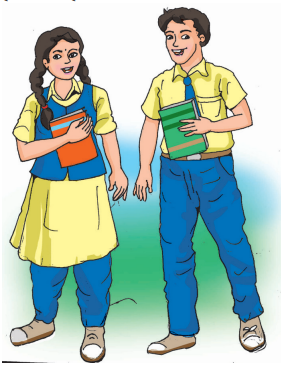
विज्ञानपन क्षेत्र : हिंदी की प्रकृति विज्ञापन के लिए बहुत लाभदायी एवं महत्त्वपूर्ण है। विज्ञापन के क्षेत्र में इलेक्ट्रॉनिक और मुद्रित मिडिया में हिंदी विज्ञापनों की भरमार होती है। इस क्षेत्र में विज्ञापन लेखन, कॉपी रायटर, विज्ञापन का प्रसारण आदि रोजगार के अवसर प्राप्त है।
![]()
मनोरंजन : मनोरंजन का क्षेत्र हिंदी के जानकारों के लिए रोजगार का मानो एक महाद्वार है। मनोरंजन के लिए आजकल टी. वी., फिल्म, रेडियो, वेब दुनिया जैसे अनेक क्षेत्र खुले हैं। इन सभी में हिंदी रचनाकार, गीतकार, संगीतकार, गायक, अनुवादक, पटकथा-लेखक, संवाद-लेखक, कलाकार, पार्श्व आवाज (डबिंग), रेडियो जॉकी, रेडियो रूपक, नाटक, भाषण, वाचन तथा प्रकाशन क्षेत्र में मुद्रक, मुद्रित शोधन (proofreading), पत्रकार, अनुवादक इन जैसे विविध प्रकार के रोजगार मौजूद है।
तकनीकी क्षेत्र : आज का युग यंत्रज्ञान का युग है। तकनीकी क्षेत्र में भी आजकल हिंदी ने प्रवेश किया है। अंतरिक्ष (space) विभाग, परमाणु (atom) विभाग, रसायन और उर्वरक (fertilizer) विभाग, जलपोत परिवहन, भारी उद्योग इन सभी क्षेत्रो में हिंदी का प्रयोग हो रहा है।
संगणक के आगमन के साथ प्रयोजनमूलक (purposeful) हिंदी की आवश्यकता बढ़ रही है। इससे आलेखन, टिप्पणी, पत्राचार, अनुवाद, शब्दावली का निर्माण तथा अनुवाद विषयक उपयोगिता बढ़ी है। गूगल में किए गए अनुवाद का उपयोग जनमानस तक पहुँच रहा है।
मोबाइल, टैब, लैपटॉप आदि में हिंदी का प्रयोग, हिंदी माध्यम में तकनीकी विषयों का प्रशिक्षण आज एक बड़ा महत्त्वपूर्ण कार्य बन चुका है।
पारिभाषिक शब्दावली का कार्य, दवाई कंपनियों में दवाई से संबंधित सूचनाओं का हिंदी अनुवाद, रेल, टेलिफोन, बैंक, बीमा, शेयर मार्केट इन सभी के लिए पारिभाषिक शब्दावली, हिंदी अनुवाद का महत्त्व है।
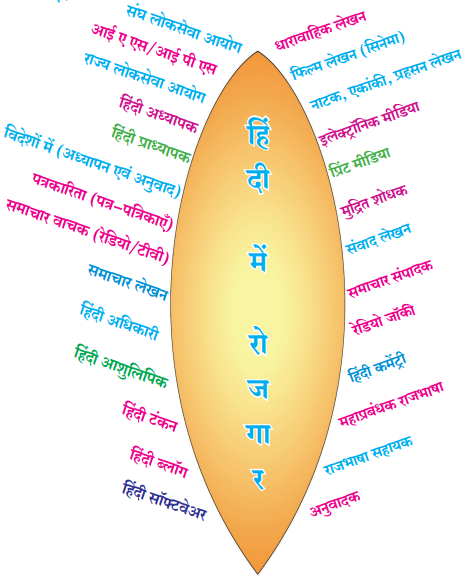
![]()
अंतरराष्ट्रीय स्तर पर रोजगार : हिंदी आज दुनिया की एक महत्त्वपूर्ण भाषा बन गई है। आज 127 देशों के विश्वविद्यालयों में हिंदी पढ़ाई जाती है। दुनिया के लगभग सभी देशों में हमारे दूतावास हैं। अन्य देशों के भी दूतावास (embassy) हमारे देश में हैं।
इन में से कई दूतावासों में अब हिंदी विभाग की स्थापना हो चुकी है। इन विभागों में हिंदी अधिकारी, अनुवादक, हिंदी सहायक, पत्राचार, समाचार, रिपोर्टों का लेखन आदि अनेक प्रकार की नौकरियाँ उपलब्ध हैं।
पर्यटन क्षेत्र : पर्यटन क्षेत्र आज एक प्रमुख व्यवसाय बन रहा है। पर्यटन क्षेत्र में बहुभाषी लोगों को ज्यादा मौका है। पर्यटक स्थानीय भाषा नहीं जानते। उनसे संवाद स्थापित करने के लिए, पर्यटकों को मार्गदर्शन या स्थलों की जानकारी देने के लिए हिंदी का उपयोग होता है। ‘टुरिस्ट गाइड’, यह रोजगार यहाँ उपलब्ध है।
अन्य क्षेत्र : फिल्म, टी. वी. में ‘डाक्यूमेंटरी लेखन’ खेल जगत में कमेंटरी करना, खेल की समालोचना करना आदि भी कुछ क्षेत्र हिंदी भाषा प्रभुओं के लिए उपलब्ध है।
हिंदी में उज्ज्वल भविष्य की संभावनाएँ शब्दार्थ :
- निपुणता = प्रविणता (efficiency),
- लिपिक = मुंशी (clerk),
- गठन = निर्माण, संस्थापना (formation),
- धारावाहिक = मालिका (serial),
- अन्वेषक = संशोधक (investigator),
- तकनीक = यंत्रज्ञान (technique),
- दायित्व = जिम्मेदारी (responsibility),
- स्नातकोत्तर = पदव्युत्तर (postgraduate).
Hindi Yuvakbharati 11th Digest Text Book Solutions









